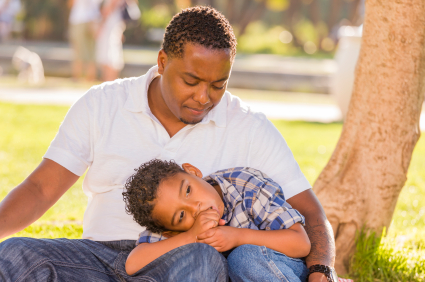Lithium Effective In Adolescent Mania And Increases White Matter Volume
At the 2014 meeting of the American Academy of Child and Adolescent Psychiatry, researcher Adelaine Robb reported that in 81 children with mania (aged 7-17), lithium was superior to placebo in reducing the severity of mania measured on the Young Mania Rating Scale. There had been some debate about the efficacy of lithium in young children with mania, but this study clearly indicates lithium’s effectiveness. The drug is approved by the Federal Drug Administration (FDA) for use in patients with bipolar disorder aged 12 and up.
Another researcher, Vivian Kafrantaris, found that in children who averaged 14.5 years of age, lithium increased the volume of the corpus callosum, a bundle of neural fibers that connects the brain’s right and left hemispheres. Lithium also normalized white matter integrity in other neural fiber tracts—the cingulum bundle and the superior longitudinal fasciculus. The authors concluded that lithium may “facilitate microstructural remodeling of white matter tracts involved in emotional regulation.”
Editor’s Note: There is much research showing that in adults, lithium has positive effects on the brain, including increases in hippocampal and cortical grey matter volume. Now it appears that lithium can improve white matter integrity in the developing brain as well.
Halting Marijuana Use Might Improve Memory
Researcher Amanda Roten reported at the 2014 meeting of the American Academy of Child and Adolescent Psychiatry that adolescents who stopped heavy marijuana use showed improvements in multiple areas of learning and memory. These data support previous findings that pot can cause impairments in cognitive functioning, but that abstaining from the drug can bring about improvement relative quickly.
These data contrast with some others. A 2009 study by J. Jacobus et al. in the journal Pharmacology Biochemistry and Behavior suggested that some changes in brain structure resulting from marijuana use, such as decreases in cortical volume, can persist for one to three months following abstinence.
Madeline Meier, another researcher at the meeting, reported that 1,037 participants who used marijuana persistently from about age 13 to age 38 lost an average of 8 IQ points. Controlling for years of education and other potential confounds such as alcohol and drug use did not affect these findings. Moreover, Meier found that “cessation of cannabis use did not fully restore IQ among adolescent-onset cannabis users.”
Editor’s Note: The popular view that marijuana is a benign substance overlooks some key facts. The main pharmacological effect of pot is an amotivational syndrome, causing apathy and lack of drive to participate in work, study, and other activities. Heavy use of pot doubles the risk of psychosis, and this risk is further increased if a user has a common genetic variation in the enzyme catechol-o-methlyl transferase (COMT), which metabolizes dopamine. The more efficient allele of COMT (known as val-56-val, identifying two valine amino acids) lowers frontal cortex dopamine more, and increases the risk of delusions and hallucinations. Marijuana alters brain structure and impairs memory. It may now be legal in some states, and while reducing penalties for smoking marijuana may be a good idea, this does not mean the drug is a harmless substance.
The moral of the story is that avoiding marijuana use in the first place, especially for people with bipolar disorder, should make it easier to get well and stay well. For current marijuana users, N-acetylcysteine (NAC, a nutritional supplement available without a prescription from health food stores) has been shown to help adolescents decrease marijuana use more than placebo.
Differentiating ADHD and Bipolar Disorder
Three articles in the September 2014 issue of the journal Psychiatric Annals (Volume 44 Issue 9) discussed differentiating pediatric bipolar disorder from attention deficit hyperactivity disorder (ADHD). The first article, by Regina Sala et al., said that reasons to suspect bipolar disorder in a child with ADHD include:
- The ADHD symptoms appear for the first time after age 12.
- The ADHD symptoms appear abruptly in an otherwise healthy child.
- The ADHD symptoms initially responded to stimulnts and then did not.
- The ADHD symptoms come and go and occur with mood changes.
- A child with ADHD begins to have periods of exaggerated elation, grandiosity, depression, decreased need for sleep, or inappropriate sexual behaviors.
- A child with ADHD has recurring severe mood swings, temper outbursts, or rages.
- A child with ADHD has hallucinations or delusions.
- A child with ADHD has a strong family history of bipolar disorder in his or her family, particularly if the child does not respond to appropriate ADHD treatments.
The second article, by this editor Robert Post, Robert Findling, and David Luckenbaugh, emphasized the greater severity and number of symptoms in childhood onset bipolar disorder versus ADHD. Children who would later develop bipolar disorder had brief and extended periods of mood elevation and decreased sleep in the early years of their lives. These, along with pressured speech, racing thoughts, bizarre behavior, and grandiose or delusional symptoms emerged differentially from age three onward. In contrast, the typical symptoms of ADHD such as hyperactivity, impulsivity, and decreased attention were equal in both diagnoses.
In the third article, Mai Uchida et al. emphasized the utility of a family history of bipolar disorder as a risk factor. Moreover, a child with depression plus ADHD is at increased risk for a switch into mania on antidepressants if there is a family history of mood disorders, emotional and behavioral dysregulation, subthreshold mania symptoms, or psychosis.
The differential diagnosis of ADHD versus bipolar disorder (with or without comorbid ADHD) is critical, as drug treatment of these disorders is completely different.
Bipolar disorder is treated with atypical antipyschotics; anticonvulsant mood stabilizers, such as valproate, carbamazepine, or lamotrigine; and lithium. Only once mood is stabilized should small doses of stimulants be added to treat residual ADHD symptoms.
ADHD, conversely, is treated with short- or long-acting stimulants such as amphetamine or methylphenidate from the onset, and these may be augmented by the noradrenergic alpha-2 agonists guanfacine or clonidine. The selective noradrenergic re-uptake inhibitor atomoxetine is also approved by the Federal Drug Administration (FDA) for the treatment of ADHD. The dopamine-active drug bupropion and the anti-narcolepsy drugs modafinil and armodafinil have mild anti-ADHD effects but have not been FDA-approved for that purpose.
A Symposium on High Risk Studies: Offspring of Parents with Bipolar Disorder
In a symposium at the 2014 meeting of the International College of Neuropsychopharmacology, four researchers shared insights on children who are at higher risk for bipolar disorder because they have a parent with the disorder.
Researcher John Nurnberger has been studying 350 children of parents with bipolar disorder in the US and 141 control children of parents with no major psychiatric disorder, following the participants into adolescence. He found a major affective disorder in 23.4% of the children with parents who have bipolar disorder and 4.4% of the controls. Of the at-risk children, 8.5% had a bipolar diagnosis versus 0% of the controls.
Nurnberger found that disruptive behavior disorders preceded the onset of mood disorders, as did anxiety disorders. These diagnoses predicted the later onset of bipolar disorder in the at-risk children, but not in the controls. A mood disorder in early adolescence predicted a substance abuse disorder later in adolescence among those at risk.
In genome-wide association studies, the genes CACNA1C and ODZ4 are consistently associated with risk of bipolar disorder, but with a very small effect size. Therefore, Nurnberger used 33 different gene variants to generate a total risk score and found that this measure was modestly effective in identifying relative risk of developing bipolar disorder. He hopes that using this improved risk calculation along with family history and clinical variables will allow better prediction of the risk of bipolar onset in the near future.
Researcher Ann Duffy reported on her Canadian studies of children who have a parent with bipolar disorder and thus are at high risk for developing the disorder. In contrast to the studies of Nurnberger et al. and many others in American patients, she found almost no childhood onset of bipolar disorder before late adolescence or early adulthood. She found that anxiety disorders emerge first, followed by depression, and then only much later bipolar disorder. Bipolar disorder occurred with comorbid substance abuse disorders in only about 10-20% of cases in 1975, but substance abuse increased to 50% of bipolar cases in 2005. The incidence of comorbid substance disorder and the year at observation correlated strongly, indicating a trend toward increased substance abuse over the 30-year period.
Duffy found that having parents who were ill as opposed to recovered was associated with a more rapid onset of mood disorder in the offspring, usually in early adulthood. Duffy emphasized the need to intervene earlier in children of parents with bipolar disorder, but this is rarely done in clinical practice. Read more
Iron Deficiency Linked to Psychiatric Disorders in Children
Iron deficiency is the most prevalent nutritional deficiency in industrialized countries and can cause problems with cognitive and intellectual development. New research published in the journal BMC Psychiatry shows that it has psychiatric ramifications as well. Children and adolescents with iron deficiency anemia are at greater risk for psychiatric disorders, including depression, bipolar disorder, anxiety, and autism.
Iron supplementation should be implemented in children with iron deficiency anemia in order to prevent any possible psychiatric repercussions, and similarly, psychiatrists should check iron levels in young patients with psychiatric disorders.
Iron provides myelin for white matter in the brain and plays a role in the function of neurotransmitters.
Longitudinal Trajectory of Childhood Bipolar Disorder
Most children recover from an episode of bipolar disorder after a considerable period of time, but the majority eventually relapse. At the 2013 meeting of the American Academy of Child and Adolescent Psychiatry (AACAP), Boris Birmaher of the University of Pittsburgh presented new data on the long-term prospective course of bipolar disorder in 255 children with bipolar I, 30 children with bipolar II, and 153 children with bipolar NOS (not otherwise specified), who together had an average age of onset of 9.3 +/- 3.9 years. The children participated in the study for an average of 8 years. Most of the children (81.5%) recovered from their episode, but only after an average of 2.5 years of follow up treatment. Yet 62.5% of those who recovered experience a recurrence after an average of 1.5 years.
Editor’s Note: It takes a long, long time to achieve recovery, and longer for bipolar NOS (more than 2 years on average) than for either Bipolar I or II (about 1.8 years). However, the high rate of relapse within 1 to 2 years is equally disturbing. These data are similar to those in many other prospective follow up studies of children, and suggest that it is important for parents to be aware that this illness is difficult to treat, and good results within weeks are not likely to be the norm. At the same time, 43% of the children with a bipolar diagnosis eventually achieved euthymia (wellness) in the longer term, so there is cause for some optimism.
Four Trajectories in Children with Bipolar Illness
Birmaher described four different long-term,trajectories observed over an average of 8 years of follow up with 438 children with bipolar disorder.
- Predominately euthymic (24%)
- Ill early then much improved (19%)
- Mild to moderately ill—euthymic only 47% of the time (34.6%)
- Predominantly ill—euthymic 11.5% of the time (20.3%)
Explaining Wellness
The predominantly well group (1) was associated in a univariate analysis with a later onset of illness, higher socio-economic status, less conflict, fewer stressors, less sexual abuse, fewer anxiety and ADHD comorbidities, and less medication (including stimulant use). In a multivariate analysis, this group was independently associated with less severe depression/mania, less suicidal ideation, less substance use, less sexual abuse, and less family history of mania and substance abuse.
This group had the best functioning, almost to 80 on the Children’s Global Assessment Scale (C-GAS). In comparison, despite considerable time euthymic for groups 2 and 3, these children still had considerable functional impairment, in the realm of 65 on the C-GAS scale. Even in Group 1, about half of the children had low C-GAS scores.
Birmaher suggested the importance of trying to find ways to delay the onset of the illness (to graduate more children into the good prognosis group) and allowing them time to develop socially and educationally and graduate from high school. Potential preventive strategies could include omega-3 fatty acids, more time spent exercising, good sleep hygiene, family focused therapy (FFT), dialectic behavior therapy, treating subsyndromal depression, and even treating parents with mood disorders to complete remission (which has been shown to improve behavioral health in offspring).
Editor’s Note: As this editor Post, Chang, and Frye wrote in the Journal of Clinical Psychiatry in 2013, beginning to study the effectiveness of these kinds of early primary and secondary prevention strategies in children who can now be readily identified clinically as at risk for a mood disorder, should be given the highest priority.
Children who have at least one parent with a bipolar or unipolar disorder, some further environmental risk factors (such as adversity in early childhood), and early symptoms of depression, anxiety, or prodromal bipolar disorder are at very high risk for bipolar disorder, and there is an urgent need for randomized studies (even open ones) of safe potential preventive strategies for these children.
Omega-3 fatty acids in particular have a strong record of safety, compelling rationale for use in bipolar disorder, and have already been shown to have significant preventive effects in decreasing the transition from early prodromal psychosis to full-blown schizophrenia.
Inflammatory Markers of Bipolar Illness Course
 People with bipolar disorder often show signs of inflammation. These could eventually help clarify diagnosis, illness activity, and treatment response, and predict illness progression. Previous studies have shown increases in c-reactive protein (CRP), interleukin-6 (IL-6), and tumor necrosis factor-alpha (TNF-alpha) in adults with mood disorder. These high levels tend to improve with medications, are related to illness severity, and are also related to manic and mixed states.
People with bipolar disorder often show signs of inflammation. These could eventually help clarify diagnosis, illness activity, and treatment response, and predict illness progression. Previous studies have shown increases in c-reactive protein (CRP), interleukin-6 (IL-6), and tumor necrosis factor-alpha (TNF-alpha) in adults with mood disorder. These high levels tend to improve with medications, are related to illness severity, and are also related to manic and mixed states.
At the 2013 meeting of the American Academy of Child and Adolescent Psychiatry (AACAP), Ben Goldstein reported on a study that examined levels of TNF alpha, IL-6, and high sensitivity CRP (hsCRP) in 123 adolescents with an average age of 20.4 years, who had been ill for an average of 12.7 years.
CRP levels in adolescents with bipolar illness were equivalent to those with rheumatoid arthritis, and much higher than healthy controls. In children with bipolar disorder, higher levels of CRP were related to more time symptomatic. High hsCRP was related to lower socio-economic status and to substance abuse disorders.
Increases in IL-6 were linked to a longer time to achieve remission and more weeks depressed. High IL-6 was related to duration of illness, positive family history of substance use, and family conflict.
High TNF alpha was related to low socioeconomic status (SES), self-injury, suicidal ideation, and positive life events.
Goldstein said studies of these markers could eventually lead to therapeutic advances, but the process would be long and would require several steps: proof of concept studies, prospective validation studies in independent samples, and demonstration of clinical gains over standard predictive markers, culminating in enhanced patient care and outcome through better, faster prediction of response.
Editor’s Note: Ideally clinicians could jump ahead by immediately attempting to determine whether adding a medication with direct anti-inflammatory effects could enhance therapeutic effects in children with elevated inflammatory markers. Treating inflammation could also theoretically help prevent cognitive deterioration and decrease the considerable risk for cardiovascular dysfunction in patients with bipolar disorder.
Irritable, Elated, And Combined Bipolar Subtypes in Children Are Similar
Research on early-onset bipolar disorder has often hinged on identifying the key characteristics of the disorder. At a symposium on the course of bipolar disorder in children at the 2013 meeting of the American Academy of Child and Adolescent Psychiatry (AACAP), Jeff Hunt of Brown University discussed findings from COBY, the Collaborative Child Bipolar Network. He described the course of illness in 446 children with bipolar disorder, including 10% who had irritability at baseline, 15% who had elated mood at baseline, and a majority (75%) who had both irritability and elation at baseline.
Most factors such as positive family history of bipolar illness and comorbidities including attention deficit hyperactivity disorder (ADHD) did not differ across the three groups. The three subtypes (irritable, elated, or mixed) did not remain stable, and most of the children eventually converted to the combined irritable and elated subtype. These data contrast with those of Ellen Liebenluft et al., who found that those with severe mood dysregulation or chronic irritability (but not other key characteristics of bipolar disorder) did not go on go on to receive a bipolar diagnosis and tended not to have a family history of bipolar disorder.
Treatment Research Needs More Advocacy
Among the hundreds of posters, workshops, clinical perspectives, and symposia presented over five days at the 2013 meeting of the American Academy of Child and Adolescent Psychiatry (AACAP), there were almost no posters or presentations on new approaches to treatment (either with drugs or therapy) for children with bipolar disorder.
As we have repeatedly emphasized in the BNN and in research publications, this deficiency has adverse consequences for the many hundreds of thousands of children and adolescents in the US with unequivocal diagnoses of bipolar disorder. Suicide is now the second leading cause of death in adolescents 13 to 17 years of age in the US. Most of these young people have a mood disorder. Bipolar disorder carries with it not only a substantial risk of suicide, but also the potential for a lifetime of dysfunction, disability, and medical comorbidity if it is inadequately treated.
Please advocate for more treatment research for childhood onset bipolar disorder. A whole generation of children, their parents, and their physicians desperately need more treatment information.
Cognitive Behavioral Therapy Tailored For Children and Adolescents
At a symposium on early-onset depression at the 2013 meeting of the American Academy of Child and Adolescent Psychiatry, Betsy Kennard described a course of cognitive behavioral therapy tailored to eliminating residual symptoms in children with unipolar depression who had no family history of a parent with bipolar disorder. In the same study Graham Emslie discussed, the investigators considered cognitive behavioral therapy for the treatment of childhood- and adolescent-onset depression.
The therapy was aimed at achieving health and wellbeing and focusing on positive attributes and strengths in the child, and it was designed to be a shorter than usual course (i.e. four weekly sessions, then four every other week, and one at three months). This regimen typically also included three to five family sessions. Other key components of the therapy included anticipating and dealing with stressors, setting goals, and practicing all the skills learned.
On a visual timeline, children identified and wrote down past stressors, how they felt when depressed, their automatic cognitions, ways they would know when they were feeling down again (i.e. feeling isolated, angry at parents, etc.), their strengths and skills, what obstacles to feeling better existed and how to circumvent them, and their long-term goals.
The therapy was based on the research of Martin Seligman and Giovanni A. Fava, plus Rye’s Six S’s (soothing, self-healing, social, success, spiritual, and self-acceptance). The children participated in practice and skill-building in each domain. Sleep hygiene and exercise were emphasized. The idea of “making it stick” was made concrete with phrases on sticky notes taken home and put up on a mirror. Postcards were even sent between sessions as reminders and for encouragement.
Editor’s Note: Most depressed kids don’t get completely well (only about 20% after an acute course of medication). Something must be added. This kind of specialized cognitive behavior therapy works and keeps patients from relapsing. This study included only those children with unipolar depression whose parents did not have bipolar disorder. However, Emslie noted that depressed children of a bipolar parent also had an exceedingly low rate of switching into mania (2 to 4%) in his experience, so fluoxetine followed by cognitive behavioral therapy might be considered for treating unipolar depressed children of a bipolar parent.
Once children have developed bipolar disorder, evidenced by hypomania or mania followed by depression, antidepressants are to be avoided in favor of mood stabilizers and atypical antipsychotics, since there is a higher switch rate in these youth when they are prescribed antidepressant monotherapy.
Since children with bipolar disorder are at such high risk for continued symptoms and relapses, the strategy of adding cognitive behavioral therapy to their successful drug treatment would appear appropriate for them as well as those with unipolar depression, especially since there is a large positive literature on the efficacy of cognitive behavioral therapy, psychoeducation, and Family Focused Therapy (FFT) in children and adults with bipolar depression. As noted previously, FFT is very effective for children at high risk because of a parent with bipolar disorder and who are already symptomatic with anxiety, depression or BP-NOS.
Moral of the story: getting kids with unipolar or bipolar depression well and keeping them well is a difficult endeavor that requires specialized, combined medication and therapy approaches and follow-up education and therapy. This is for sure. The hope would also be that good early and long-term intervention would yield a more benign course of recurrent unipolar or bipolar disorder than would treatment as usual (which all too often consists of medication only).










